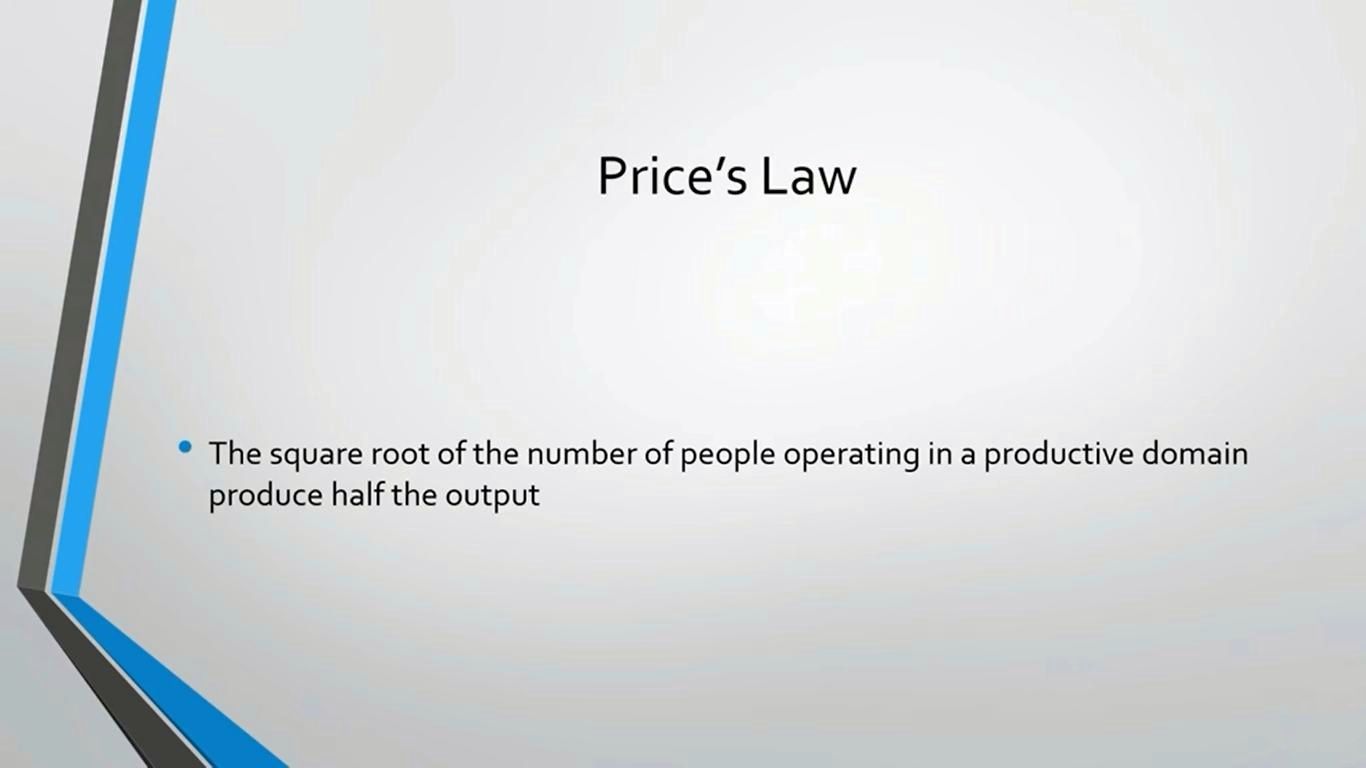Price's Law Alt 80/20 Angle
Solution Selling does love a touch of Pareto.
Oh the fun - and truckloads of orders - I had in the late 90s in my days that what would now be called Data Warehousing or BI.
All those must-have queries of execs lovin' the new superpower to know precisely which vaunted 20 percent was accounting for the once-mythical 80.
And crucially, it must be said, then moving the needle where gaps could be filled.
There's evolution of this classic. I blogged on one via Taleb's Black Swan. Where he proposed that a 50/1 was in play. Where half of all good comes from a mere one percent of people.
Whilst perhaps more guideline rules of thumb than immutable rules, there's other slices on this. From long ago too.
Including circa 1935, Zipf. Via language usage to national city population sizes. On which I blogged a couple years back.
And just as Pareto's late 19th Century original observations spread from Italian property ownership analysis, this one from the mid-20th Century, also comes from a specific source. Namely published scientist volumes.
Price's Law states 50% of the work is done by the square root of the total number of people who participate in said work.
According to Jordan Peterson, something to "hammer into your heart". Which "applies in every single realm where there's creative production".
"Here's a nasty little law;
As your company grows, incompetence grows exponentially and competence grows linearly."
Let's work through an example in our space.
You've a salesteam of nine. Then half the results will come from three of them.
0.5 x total $sales comes from √9
I think back to salesteam sizes I've been tight with that feature the round number square roots. 4, 9, 16, 25 and so on.
I sense there's a potential threshold to pass where this might hold true and more snugly map onto salesteams.
For instance, take the salesteam of 4.
Yet for those larger outfits, there may well be some closeness.
I can picture the sales meeting scene where the boss positively gees up their charges by exhorting those in the 'other' half to make a big difference by pushing up into the 'higher' half.
Away from sales management carrot-and-sticking, then consider the prospect application.
Most surely these days know of the 80/20 Rule. Who doesn't want to rebalance sometimes from being shackled by the 'twenty' task that frustratingly takes up eighty percent of their time?
Yet now we have an extra lens.
Can Price's Law be stretched onto any amount of something.
Number of customers/products/services? Suppliers? Process Elements?
And does the output measure work when moved to say, profit, frequencies or hours?
In whatever case, there is, I suggest, a useful conversation starter in this.
One that both distinguishes you from anyone also pitching them as well as helping to get to the bottom of what exactly it is that they wish to improve.

